Ropivacaine
- CAS No.
- 84057-95-4
- Chemical Name:
- Ropivacaine
- Synonyms
- Naropin;ROPIVACAINE MESYLATER;RopivacaineHcl/MesylateBase;(S)-N-(2,6-Dimethylphenyl)-1-propylpiperidine-2-carboxamide;Seduron;Naropine;ROPIVACAINE;MesylateBase;S-ROPIVACAINE;ROPACARAINEHCL
- CBNumber:
- CB4412687
- Molecular Formula:
- C17H26N2O
- Molecular Weight:
- 274.4
- MDL Number:
- MFCD00864425
- MOL File:
- 84057-95-4.mol
- MSDS File:
- SDS
| Melting point | 144-146° |
|---|---|
| alpha | D25 -82.0° (c = 2 in methanol) |
| Boiling point | 410.2±45.0 °C(Predicted) |
| Density | 1.044±0.06 g/cm3(Predicted) |
| storage temp. | Refrigerator |
| solubility | Aqueous Acid (Slightly), Chloroform (Slightly), DMSO (Slightly) |
| form | Solid |
| pka | 8.16(at 25℃) |
| color | White to Off-White |
| InChIKey | ZKMNUMMKYBVTFN-HNNXBMFYSA-N |
| CAS DataBase Reference | 84057-95-4(CAS DataBase Reference) |
| NCI Dictionary of Cancer Terms | Naropin |
| FDA UNII | 7IO5LYA57N |
| NCI Drug Dictionary | Naropin |
| ATC code | N01BB09 |
SAFETY
Risk and Safety Statements
| Symbol(GHS) |   GHS07,GHS08 |
|---|---|
| Signal word | Danger |
| Hazard statements | H336-H370 |
| Precautionary statements | P260-P264-P270-P271-P304+P340+P312-P308+P311 |
| HS Code | 2933399090 |
Ropivacaine price More Price(21)
| Manufacturer | Product number | Product description | CAS number | Packaging | Price | Updated | Buy |
|---|---|---|---|---|---|---|---|
| Sigma-Aldrich | PHR2571 | Ropivacaine | 84057-95-4 | 500MG | $241 | 2024-03-01 | Buy |
| Sigma-Aldrich | 1605497 | Ropivacaine | 84057-95-4 | 200mg | $276 | 2024-03-01 | Buy |
| Alfa Aesar | H37974 | Ropivacaine 97% | 84057-95-4 | 250mg | $59.1 | 2023-06-20 | Buy |
| Alfa Aesar | H37974 | Ropivacaine 97% | 84057-95-4 | 1g | $151 | 2023-06-20 | Buy |
| Alfa Aesar | H37974 | Ropivacaine 97% | 84057-95-4 | 5g | $520 | 2023-06-20 | Buy |
Ropivacaine Chemical Properties,Uses,Production
Description
Ropivacaine is an aminoamide local anaesthetic drug commonly marketed by AstraZeneca under the trade name Naropin. Naropin was launched in 1996 in Australia, Denmark, Finland, the Netherlands and Sweden as a local anesthetic. It can be prepared in a number of ways the most efficient involves a three step sequence beginning with L-pipecolic acid. This compound is the first one in this family to be produced as the pure (S)- enantiomer. The (R)-enantiomer has been shown to have cardiotoxic effects. Thus ropivicaine has less cardiovascular and CNS toxicity than bupivacaine. It is a Na channel blocker that is specific for affecting nerve fibers responsible for transmission of pain (Aδ and C) with no effect on fibers responsible for motor function (Aβ). Clinically, it has distinct advantages over bupivacaine. Its effects are slower in onset, less intense and have a shorter duration. This is a result of extensive metabolism in the liver to the 3-hydroxy isomer by CYPIA2 isoenzyme.
Ropivacaine is an anesthetic (numbing medicine) that blocks the nerve impulses that send pain signals to your brain.
Ropivacaine is used as a local (in only one area) anesthesia for a spinal block, also called an epidural. The medication is used to provide anesthesia during a surgery or C-section, or to ease labor pains.
https://www.drugs.com/mtm/ropivacaine.html
Originator
Astra (Sweden)
Uses
(S)-Ropivacaine acts as a local anaesthetic for use during medical procedures. Frequently used in epidural procedures as a labor analgesia
Uses
Ropivacaine is a pure S(-)-enantiomer of propivacaine. It is a long-acting amide local anesthetic that has efficacy and potency nearly as high as bupivacaine and levobupivacaine but has lower CNS and cvS toxicity. If there are any differences between bupivacaine and ropivacaine it is the slightly shorter period of activity in spinal and epidural applications and a lowered ability to penetrate large motor nerves. It is the reduced lipophilicity that contributed to the lowered penetration of the motor nerves, combined with its stereoselective properties that allows ropivacaine to have significantly reduced Cvs toxicity compared to bupivacaine (Simpson et al. 2005). Ropivacaine has a diphasic effect on peripheral vasculature-it is vasoconstrictive when injected at a concentration below 0.5 w/v% and there is dilation at concentrations over 1 w/v% (Cederholm et al. 1992).
Ropivacaine HCl is an anaesthetic agent and blocks impulse conduction in nerve fibres through inhibiting sodium ion influx reversibly.
http://www.selleckchem.com/products/ropivacaine-hcl.html
Definition
ChEBI: A piperidinecarboxamide-based amide-type local anaesthetic (amide caine) in which (S)-N-propylpipecolic acid and 2,6-dimethylaniline are combined to form the amide bond.
brand name
Narapin [as hydrochloride] (Astra).
Biological Functions
Ropivacaine (Naropin) is a recently developed longacting amide-linked local anesthetic. Its duration of action is similar to that of bupivacaine, but it is slightly less potent and requires higher concentrations to achieve the same degree of block. Its primary advantage over bupivacaine is its lesser degree of cardiotoxicity.
General Description
The recognized increase in cardiotoxicity of one bupivacaineisomer led to the stereospecific production of ropivacaine asthe single “S” (-) enantiomer. Ropivacaine is the propylanalog of mepivacaine (methyl) and bupivacaine (butyl). ThepKa of the tertiary nitrogen is 8.1, and it displays the same degreeof protein binding as bupivacaine ( 94%). Althoughropivacaine has similar properties as bupivacaine, it displaysless cardiotoxicity. The shortened alkyl chain gives it approximatelyone third of the lipid solubility of bupivacaine.
Mechanism of action
Ropivacaine is a member of the amino amide class of local anesthetics and is supplied as the pure S-(- )-enantiomer. Local anesthetics block the generation and the conduction of nerve impulses, presumably by increasing the threshold for electrical excitation in the nerve, by slowing the propagation of the nerve impulse, and by reducing the rate of rise of the action potential. In general, the progression of anesthesia is related to the diameter, myelination and conduction velocity of affected nerve fibers. Clinically, the order of loss of nerve function is as follows: (1) pain, (2) temperature, (3) touch, (4) proprioception, and (5) skeletal muscle tone.
Pharmacology
This is a single (S–) enantiomer, similar in structure to bupivacaine. S ubstitution of a propyl for the butyl side chain of bupivacaine reduces lipid solubility; this leads to reduced potential for toxicity and also greater separation between sensory and motor blockade. Efficacy is similar, but motor block is reduced compared with equianalgesic doses of racemic bupivacaine.
Clinical Use
Ropivacaine is a long-acting amide-type local anestheticwith inherent vasoconstrictor activities, so it does not requirethe use of additional vasoconstrictors. It is approved forepidural, nerve block, infiltration, and intrathecal anesthesia.
Side effects
Reactions to ropivacaine are characteristic of those associated with other amide-type local anesthetics. A major cause of adverse reactions to this group of drugs may be associated with excessive plasma levels, which may be due to overdosage, unintentional intravascular injection or slow metabolic degradation.
Check with your doctor or nurse immediately if any of the following side effects occur:
More common
Blurred vision
chest pain or discomfort
confusion
dizziness, faintness, or lightheadedness when getting up suddenly from a lying or sitting position
lightheadedness, dizziness, or fainting
slow or irregular heartbeat
sweating
unusual tiredness or weakness
Less common
Burning, crawling, itching, numbness, prickling, "pins and needles", or tingling feelings
chills
decrease in frequency or amount of urine
difficulty in passing urine (dribbling)
fever
painful urination
Rare
Absence of or decrease in body movement
agitation
anxiety
https://www.mayoclinic.org/drugs-supplements/ropivacaine-injection-route/side-effects/drg-20065875
https://www.accessdata.fda.gov/
Metabolism
The metabolism of ropivacaine in human is mediated by hepatic CYP1A2 isozymes and, to a minor extent, by CYP3A4. The major metabolite is 3-hydroxyropivacaine, and the minor metabolite is (S)-2′,6′-pipecoloxylidide (a N-dealkylated product).
Ropivacaine is extensively metabolized in the liver, predominantly by aromatic hydroxylation mediated by cytochrome P4501A to 3-hydroxyropivacaine. After a single IV dose approximately 37% of the total dose is excreted in the urine as both free and conjugated 3-hydroxy ropivacaine. Low concentrations of 3-hydroxy ropivacaine have been found in the plasma. Urinary excretion of the 4-hydroxy ropivacaine, and both the 3-hydroxy N-de-alkylated (3-OH-PPX) and 4-hydroxy N-dealkylated (4-OH-PPX) metabolites account for less than 3% of the dose. An additional metabolite, 2- hydroxy-methyl-ropivacaine, has been identified but not quantified in the urine. The N-de-alkylated metabolite of ropivacaine (PPX) and 3-OH-ropivacaine are the major metabolites excreted in the urine during epidural infusion. Total PPX concentration in the plasma was about half as that of total ropivacaine; however, mean unbound concentrations of PPX were about 7 to 9 times higher than that of unbound ropivacaine following continuous epidural infusion up to 72 hours. Unbound PPX, 3- hydroxy and 4-hydroxy ropivacaine, have a pharmacological activity in animal models less than that of ropivacaine. There is no evidence of in vivo racemization in urine of ropivacaine.
https://www.accessdata.fda.gov

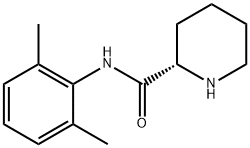
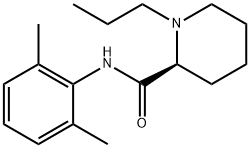
Ropivacaine Preparation Products And Raw materials
Raw materials
1of2
Preparation Products
| Supplier | Tel | Country | ProdList | Advantage | |
|---|---|---|---|---|---|
| Hebei Yanxi Chemical Co., Ltd. | +8617531190177 | peter@yan-xi.com | China | 5993 | 58 |
| Firsky International Trade (Wuhan) Co., Ltd | +8615387054039 | admin@firsky-cn.com | China | 436 | 58 |
| Xiamen Wonderful Bio Technology Co., Ltd. | +8613043004613 | Sara@xmwonderfulbio.com | China | 305 | 58 |
| Anhui Ruihan Technology Co., Ltd | +8617756083858 | daisy@anhuiruihan.com | China | 994 | 58 |
| Nantong Guangyuan Chemicl Co,Ltd | +undefined17712220823 | admin@guyunchem.com | China | 616 | 58 |
| Sigma Audley | +86-18336680971 +86-18126314766 | nova@sh-teruiop.com | China | 525 | 58 |
| Shanghai Aosiris new Material Technology Co., LTD | 86-15139564871 +8615139564871 | wrjmoon2000@163.com | China | 352 | 58 |
| Henan Tianfu Chemical Co.,Ltd. | +86-0371-55170693 +86-19937530512 | info@tianfuchem.com | China | 21691 | 55 |
| Hangzhou FandaChem Co.,Ltd. | 008657128800458; +8615858145714 | fandachem@gmail.com | China | 9348 | 55 |
| Nanjing ChemLin Chemical Industry Co., Ltd. | 025-83697070 | product@chemlin.com.cn | CHINA | 3012 | 60 |
Related articles
- Synthesis and Application of Ropivacaine
- Ropivacaine is the first pure levotropic long-acting amide local anesthetic.
- Nov 8,2022
View Lastest Price from Ropivacaine manufacturers
| Image | Update time | Product | Price | Min. Order | Purity | Supply Ability | Manufacturer | |
|---|---|---|---|---|---|---|---|---|
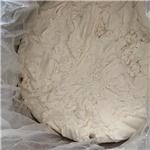 |
2024-04-12 | Ropivacaine
84057-95-4
|
US $3.00-1.00 / kg | 1kg | 99.9% | 10 tons | Shanghai Aosiris new Material Technology Co., LTD | |
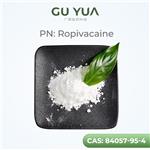 |
2024-03-08 | Ropivacaine
84057-95-4
|
US $10.00 / kg | 1kg | 99% | 1000kg | Nantong Guangyuan Chemicl Co,Ltd | |
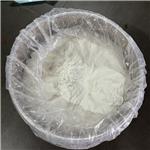 |
2024-02-22 | Ropivacaine
84057-95-4
|
US $25.00-10.00 / kg | 1kg | 99.8% | 200tons/year | Sigma Audley |
-

- Ropivacaine
84057-95-4
- US $3.00-1.00 / kg
- 99.9%
- Shanghai Aosiris new Material Technology Co., LTD
-

- Ropivacaine
84057-95-4
- US $10.00 / kg
- 99%
- Nantong Guangyuan Chemicl Co,Ltd
-

- Ropivacaine
84057-95-4
- US $25.00-10.00 / kg
- 99.8%
- Sigma Audley
84057-95-4(Ropivacaine)Related Search:
1of4





